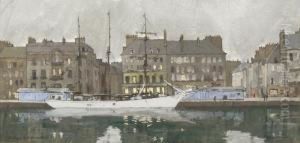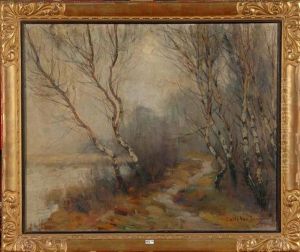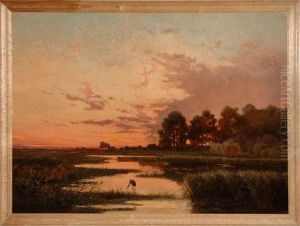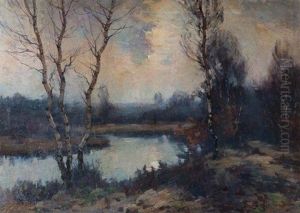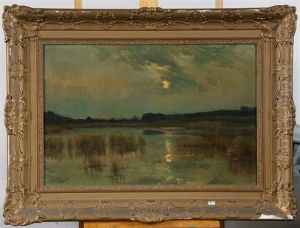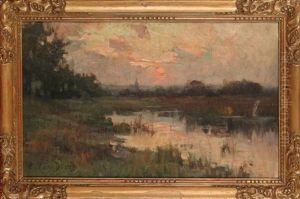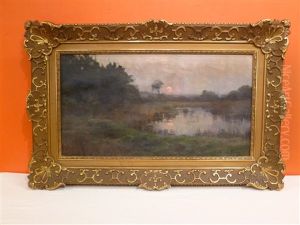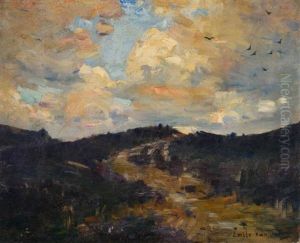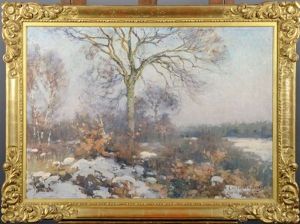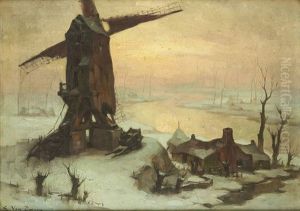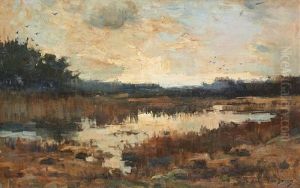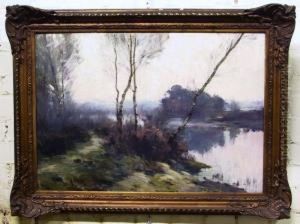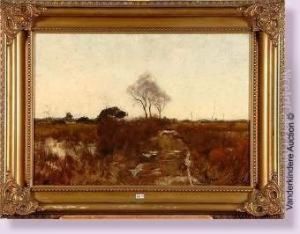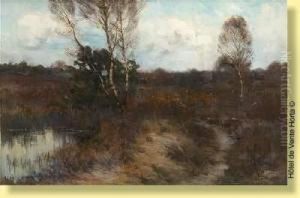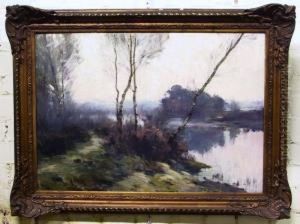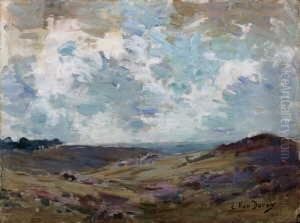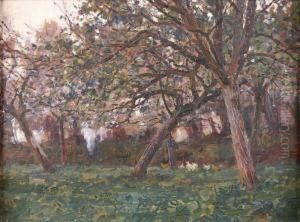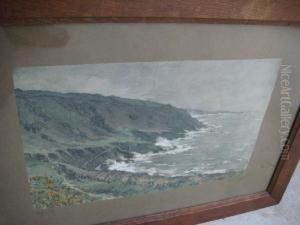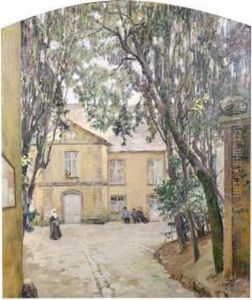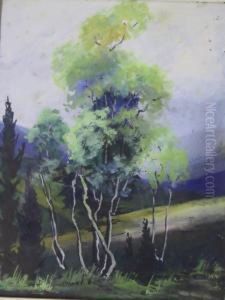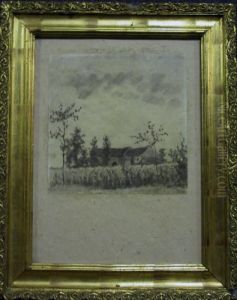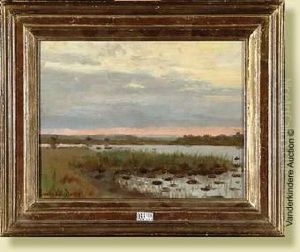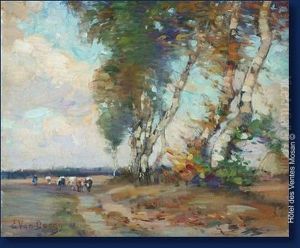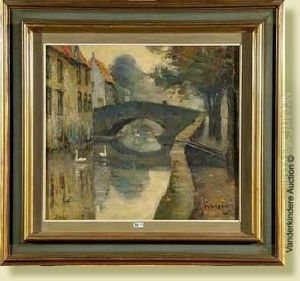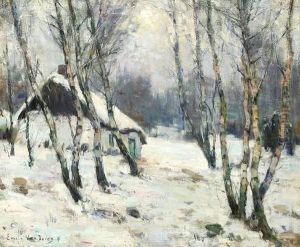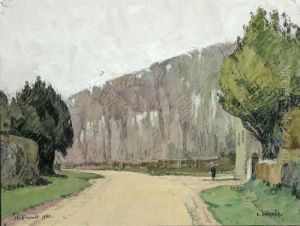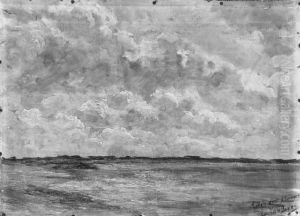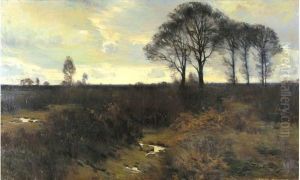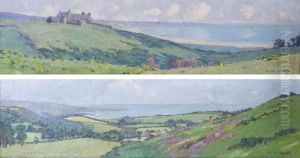Emile Van Doren Paintings
Emile Van Doren was a Belgian painter known for his landscape paintings and his association with the Genk area, which he helped to popularize through his art. Born in 1865 in the city of Mons, Belgium, Van Doren showed an early interest in art and went on to study at the Academy of Fine Arts in Brussels. His early work was influenced by the Barbizon school, which emphasized painting nature directly from life with a focus on the effects of light and atmosphere.
After his studies, he traveled to Genk, a small town in the province of Limburg, which at the time was still relatively rural and untouched by industrialization. The natural beauty of the Campine region, with its heathlands, forests, and peat bogs, greatly inspired Van Doren. He settled in Genk in 1897 and remained there for the rest of his life, becoming a central figure in the local artistic community.
Van Doren's landscapes are characterized by a harmonious palette and a serene, often poetic representation of the natural world. He captured the changing seasons and the transformation of the landscape over time, and his works often evoke a sense of tranquility and timelessness. Over the years, he became known as the 'painter of the Campine' due to his dedication to representing the area's unique environment.
Throughout his career, Emile Van Doren remained active in the Belgian art scene. His paintings were exhibited widely in Belgium and abroad, gaining him recognition and accolades. He also mentored younger artists and was involved in the establishment of the 'Genker School' of landscape painting, which attracted many artists to the area and contributed to the development of landscape art in Belgium.
Emile Van Doren passed away in 1949, leaving behind a rich legacy of landscape paintings that continue to be admired for their beauty and their celebration of the natural world. His former home in Genk has been turned into the Emile Van Doren Museum, which houses a collection of his works and serves as a testament to his influence on the region and its artistic heritage.
